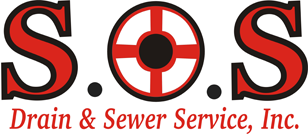
If you have trees growing in your yard, they may be looking for water and nutrients in the wrong place: your sewer line connecting the plumbing in your house with the city’s main line in the street. These roots can enter through cracks or joints, growing and expanding to clog or break your pipes.
How to Tell if There are Roots in Your Sewer Line
There are signs in your house that may indicate a clog in your sewer line. These include
- Difficulties with multiple drains, not just one
- Plumbing that gurgles
- Sinks or toilets that drain slowly or back up
- Toilets that bubble or percolate
- Basement drain that backs up
You’re especially at risk if you have large trees and an older sewer system.
Sewer Inspection
To confirm that your clog is caused by roots growing into the sewer line, arrange for a sewer inspection by a professional technician. A drain snake with a camera on the end can travel through the sewer line to show the location of blockages or any damage and assess the severity of the issue. The inspection may find that blockages other than roots are causing your sewer line problems.
Fixing Roots in the Sewer Line
Having a professional do a camera inspection and cleaning of your sewer line every other year can deal with small root problems before they cause larger problems. Sewer services have several options for handling your roots.
Root Killer
Some recommendations suggest flushing salts or chemicals down the toilet to kill the tree roots in the sewer line. The chemical solution may also prevent roots from returning for about a year. Do get a professional inspection to be sure the blockage is caused by tree roots. Some of these chemicals can be harmful to people and to the environment, so it’s a job for the professionals.
Sewer Auger
A drain cleaning service can use a powered sewer auger. A steel cable with rotating blades at the end goes down the sewer line and cuts the roots growing in the pipe. The process will need to be repeated periodically as the roots grow back. Some homeowners may be comfortable renting a sewer auger themselves.
Hydro Jetting
Hydro jetting is a process where a hose with a special nozzle goes into the sewer cleanout and uses pressurized water to blast the roots in the sewer line. It breaks the roots and rinses them away. This method is best for pipes that aren’t fragile.
Pipe Replacement
If enough roots have grown into a pipe to make it very leaky, the drain cleaning service may recommend digging it up and replacing it. This can be an expensive and time-consuming process, but, in some cases, trenchless repairs can insert a liner inside the pipe to seal it. If you have older clay pipes, switching to PVC pipes will make it less likely that roots will get in.
Gardening
Root barriers can be installed around pipes to prevent roots from entering, but that does involve digging down to expose the pipes. Consult with an arborist if you’ll need to cut a lot of roots from a tree. You may decide to remove the tree instead to eliminate any future problems.
When planting new trees, check with your water department or public works to find out where the sewer lines are located in your yard. In general, plant trees more than 10 feet away from the sewer lines. Some types of trees, which need a lot of water, grow quickly, or have large root systems, should be planted 20 to 30 feet away from sewer lines. This includes willows, maples, and oaks.
While handy homeowners can tackle temporary fixes, removing roots or clogs from your main line is a task best handled by the professionals. S.O.S. Drain & Sewer Service is happy to help solve any problems with your drains and sewers. Contact us with any questions or to schedule an appointment.








